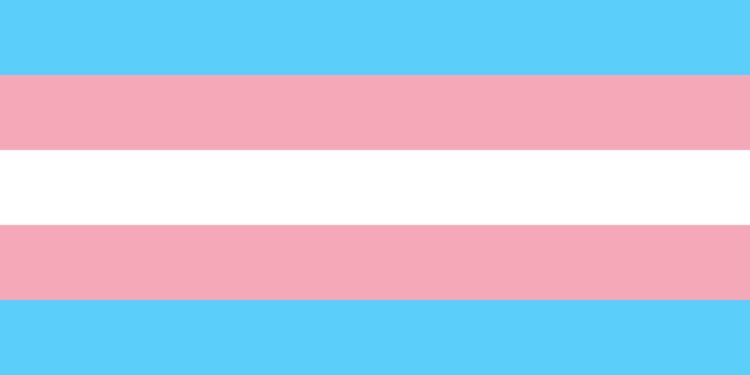 | ||
Genderqueer (GQ), also termed non-binary, is a catch-all category for gender identities that are not exclusively masculine or feminine—identities which are thus outside of the gender binary and cisnormativity. Genderqueer people may identify as one or more of the following:
Contents
- Definitions and identity
- Gender neutrality
- Pronouns and titles
- Legal recognition
- Discrimination
- Symbols
- References
Definitions and identity
In addition to being an umbrella term, genderqueer has been used as an adjective to refer to any people who transgress distinctions of gender, regardless of their self-defined gender identity, i.e., those who "queer" gender, expressing it non-normatively, or overall not conforming into the binary genders, man and woman. Androgynous (also androgyne) is frequently used as a descriptive term for people in this category, though genderqueer people may express a combination of masculinity and femininity, or neither, in their gender expression, and not all identify as androgynous. However, the term has been applied by those describing what they see as a gender ambiguity. Some references use the term transgender broadly, in such a way that it includes genderqueer/non-binary people.
The Human Rights Campaign Foundation and Gender Spectrum use the term gender-expansive to convey "a wider, more flexible range of gender identity and/or expression than typically associated with the binary gender system".
A person who is genderfluid prefers to remain flexible about their gender identity rather than committing to a single gender. They may fluctuate between genders or express multiple genders at the same time.
An agender person ('a−' meaning "without"), also called genderless, genderfree, non-gendered, or ungendered, is someone who identifies as having no gender or being without a gender identity. Although this category includes a broad range of identities which do not conform to traditional gender norms, scholar Finn Enke states that people who identify with any of these positions may not necessarily self-identify as transgender. Agender people have no specific set of pronouns; singular they is typically used, but it is not the default. Neutrois and agender were two of 50 available custom genders on Facebook, which were added on 13 February 2014. Agender is also available as a gender option on OkCupid since 17 November 2014.
Some genderqueer people are medically treated for gender dysphoria with surgery and/or hormones as trans men and women are. The World Health Organization considers sex and gender to be distinct concepts. Some genderqueer people identify as a male woman or a female man, or combine genderqueer with another gender option. Gender identity is separate from sexual or romantic orientation, and genderqueer people have a variety of sexual orientations, just like transgender and cisgender people do.
Gender neutrality
Gender neutrality is the movement to end discrimination of gender altogether in society through means of gender-neutral language, the end of sex segregation, and other means.
Pronouns and titles
Some genderqueer people prefer to use gender-neutral pronouns such as one, ze, sie, hir, co, ey or singular "they", "their" and "them", while others prefer the conventional gender-specific pronouns "her" or "him". Some genderqueer people prefer to be referred to alternately as he and she, and some prefer to use only their name and not use pronouns at all. Many genderqueer people prefer additional neutral language, such as the title "Mx." instead of Mr. or Ms.
Legal recognition
Multiple countries legally recognize non-binary or third gender classifications. In some countries, such classifications may only be available to intersex people, born with sex characteristics that "do not fit the typical definitions for male or female bodies". In other countries, they may be only available to transgender people, people with gender identities that differ from sex assigned at birth.
Some non-western societies have long recognized transgender people as a third gender, though this may not (or may only recently) include formal legal recognition. In western societies, Australia may have been the first country to recognize third classifications, following recognition of Alex MacFarlane as having indeterminate sex, reported in 2003. Transgender advocate Norrie May-Welby was recognized as having unspecified status in 2014. In the United States, an Oregon circuit court ruled in 2016 that Jamie Shupe could legally change gender to non-binary.
Discrimination
In the United States, the majority of respondents to the National Transgender Discrimination Survey chose "A gender not listed here". The 'Not Listed Here' respondents were 9 percentage-points (33 percent) more likely to report forgoing healthcare due to fear of discrimination than the general sample (36 percent compared to 27 percent). 90 percent reported experiencing anti-trans bias at work and 43 percent reported having attempted suicide.
Symbols
There have been various flags used in the genderqueer community to represent various identities. The genderqueer pride flag was designed in 2011. Lavender represents androgyny or simply queerness, white represents agender identity, and green represents those whose identities which are defined outside of the binary. Non-binary people, who fall under the genderqueer umbrella, also have their own pride flag, created in 2014. Yellow represents people whose gender exists outside of the binary, purple is those who feel their gender is a mixture or between male and female, and the black represents people who feel as if they have no gender. Genderfluid people, who also fall under the genderqueer umbrella, have their own flag as well. The pink stripe represents femininity, the white stripe represents lack of gender, the purple represents mixed gender or androgyny, the black represents all other genders, and the blue represents masculinity.
